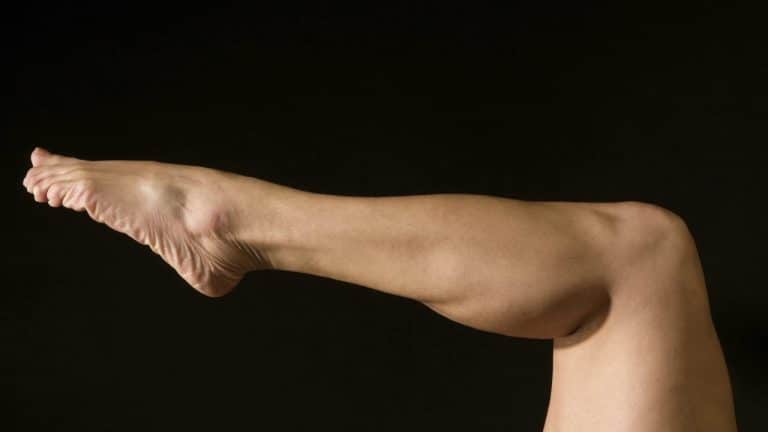Introduction
At New York Liposuction Center, we understand the importance of proper preparation and treatment for swelling and bruising after a facelift. A facelift is a surgical procedure that helps to improve the appearance of facial wrinkles and sagging skin. Swelling and bruising can occur after this procedure, but there are steps that can be taken to reduce their severity. In this blog post, we will discuss tips for managing swelling and bruising after a facelift, including preparing for the procedure, treating the side effects, and preventing them from occurring. We hope you find this information helpful in your journey towards achieving your desired results.
Preparing for a Facelift
Undergoing a facelift is a major decision that should not be taken lightly. It is important to understand the risks, benefits, and recovery process prior to scheduling any procedure. To ensure a safe and successful outcome, there are certain steps that should be taken when preparing for a facelift.
Consultation with a Professional
The first step in preparing for a facelift is to consult with an experienced and qualified professional. During the consultation, the patient will have the opportunity to discuss their desired outcomes and expectations with their doctor. The doctor will also assess the patient’s health and medical history to determine if they are an appropriate candidate for the surgery.
Pre-Surgery Instructions
Once the patient has been approved for surgery, they will receive detailed instructions on how to prepare for their procedure. This usually includes stopping certain medications or supplements, quitting smoking, avoiding alcohol consumption, and abstaining from any strenuous activities that could increase the risk of complications.
Post-Surgery Instructions
The doctor will also provide instructions on what to do after the surgery in order to promote healing and reduce swelling and bruising. These instructions may include using cold compresses, avoiding certain foods, taking prescribed medications, massaging the area gently, and wearing compression garments. The doctor may also recommend specific vitamins or supplements that can help speed up the healing process.
Main Idea: Preparing for a facelift requires consulting a professional, following pre- and post-surgery instructions, and understanding risks and benefits.
Treating Swelling and Bruising After a Facelift
Swelling and bruising after a facelift can be uncomfortable and unsightly, but there are treatments available to help reduce these symptoms. It is important to consult with a professional before beginning any treatment plan.
Cold Compresses
cold compresses are an easy and effective way to reduce swelling and bruising after a facelift. Applying cold compresses to the face for 10-15 minutes several times a day can help reduce inflammation and discomfort.
Reducing Activity Level
It is important to reduce physical activity after a facelift in order to minimize swelling and bruising. Avoid strenuous activities such as running, lifting weights, or playing sports for at least two weeks after surgery.
Avoiding Certain Foods
Certain foods can increase inflammation in the body, so it is important to avoid them after a facelift. These include processed foods, fried foods, dairy products, spicy foods, and sugary snacks.
Medication Use
Medications such as ibuprofen or acetaminophen can be taken to help reduce pain and swelling after a facelift. It is important to consult with your doctor before taking any medications as they may interact with other medications you are taking or cause side effects.
Massage Therapy
Massage therapy can be used to help reduce swelling and bruising after a facelift by increasing blood circulation in the area and helping the body rid itself of toxins that can cause inflammation. It is important to find a qualified massage therapist who has experience working with post-surgical patients.
Lymphatic Drainage Massage
Lymphatic drainage massage is an effective way to reduce swelling and bruising after a facelift as it helps move fluid away from the area of surgery and helps the body rid itself of toxins that can cause inflammation. It should be performed by an experienced massage therapist who specializes in this type of massage therapy.
Vitamins and Supplements
Vitamins and supplements such as vitamin C, zinc, and bromelain can help reduce swelling and bruising after a facelift by helping the body heal itself more quickly. It is important to consult with your doctor before taking any vitamins or supplements as they may interact with other medications you are taking or cause side effects.
Laser Therapy
Laser therapy can be used to help reduce swelling and bruising after a facelift by increasing blood circulation in the area and helping the body heal itself more quickly. This type of therapy should only be performed by an experienced professional who specializes in laser treatments for post-surgical patients.
Acupuncture
Acupuncture is an ancient Chinese practice that has been used for centuries to promote healing in the body. Acupuncture may help reduce swelling and bruising after a facelift by increasing blood circulation in the area as well as helping the body rid itself of toxins that can cause inflammation. It should only be performed by an experienced acupuncturist who specializes in post-surgical treatments.
Ultrasound Therapy
Ultrasound therapy has been used for many years to help speed up healing time and reduce swelling and bruising after surgery or injury. Ultrasound waves penetrate deep into the tissue, creating heat which helps increase blood flow in the area, thus reducing inflammation and aiding in healing. Ultrasound therapy should only be performed by an experienced professional who specializes in this type of treatment.
| Treatment | Description |
| Cold Compresses | Reduce swelling and bruising. |
| Reducing Activity Level | Avoid strenuous activities for two weeks. |
| Avoiding Certain Foods | Processed, fried, dairy, spicy, sugary. |
| Medication Use | Ibuprofen or acetaminophen. |
| Massage Therapy | Increase blood circulation. |
| Lymphatic Drainage Massage | Move fluid away from area of surgery. |
| Vitamins and Supplements | Vitamin C, zinc, bromelain. |
| Laser Therapy | Increase blood circulation. |
| Acupuncture | Increase blood circulation and rid of toxins. |
| ultrasound therapy | Speed up healing time and reduce swelling. |
Prevention of Swelling and Bruising After a Facelift
It is important to take preventative measures to reduce swelling and bruising after a facelift. Taking steps prior to and following the surgery can help minimize the amount of swelling and bruising that occurs.
Keeping Head Elevated at Night
One way to reduce swelling and bruising is to keep your head elevated at night, especially during the first week after surgery. This can be done by sleeping on an adjustable bed or with extra pillows under your head. Keeping your head elevated will help reduce the amount of blood that pools in your face, which can lead to swelling and bruising.
Wearing Compression Garments
Compression garments should be worn for several weeks after surgery to help reduce swelling and bruising. The compression garments should fit snugly but not too tight, as this could cause more discomfort or pain. It is also important to follow any instructions given by your doctor regarding how long you should wear the garment each day.
Avoiding Sun Exposure
It is important to avoid sun exposure for several weeks after a facelift, as it can lead to increased swelling and bruising. If you must go out in the sun, make sure to wear a wide-brimmed hat or other protective clothing and use sunscreen with an SPF of at least 30.
By following these preventative measures, you can help reduce the amount of swelling and bruising that occurs after a facelift procedure. Additionally, it is important to follow all instructions given by your doctor before and after the surgery in order to ensure a safe and successful outcome.
Main Idea: Taking preventative measures can reduce swelling and bruising after a facelift. Key Findings: Keep head elevated at night, wear compression garments, avoid sun exposure.
At New York Liposuction Center, we understand that managing swelling and bruising after a facelift can be challenging. Our team of experts is here to provide you with the best care and advice to ensure your recovery is as smooth as possible. We are proud to offer a variety of treatments to help reduce swelling and bruising, including cold compresses, massage therapy, laser therapy, acupuncture, and ultrasound therapy. Additionally, we provide tips on how to prevent swelling and bruising before and after your procedure. With our expertise and guidance, you can rest assured that you will have the best results from your facelift. Contact us today to learn more about our services!





